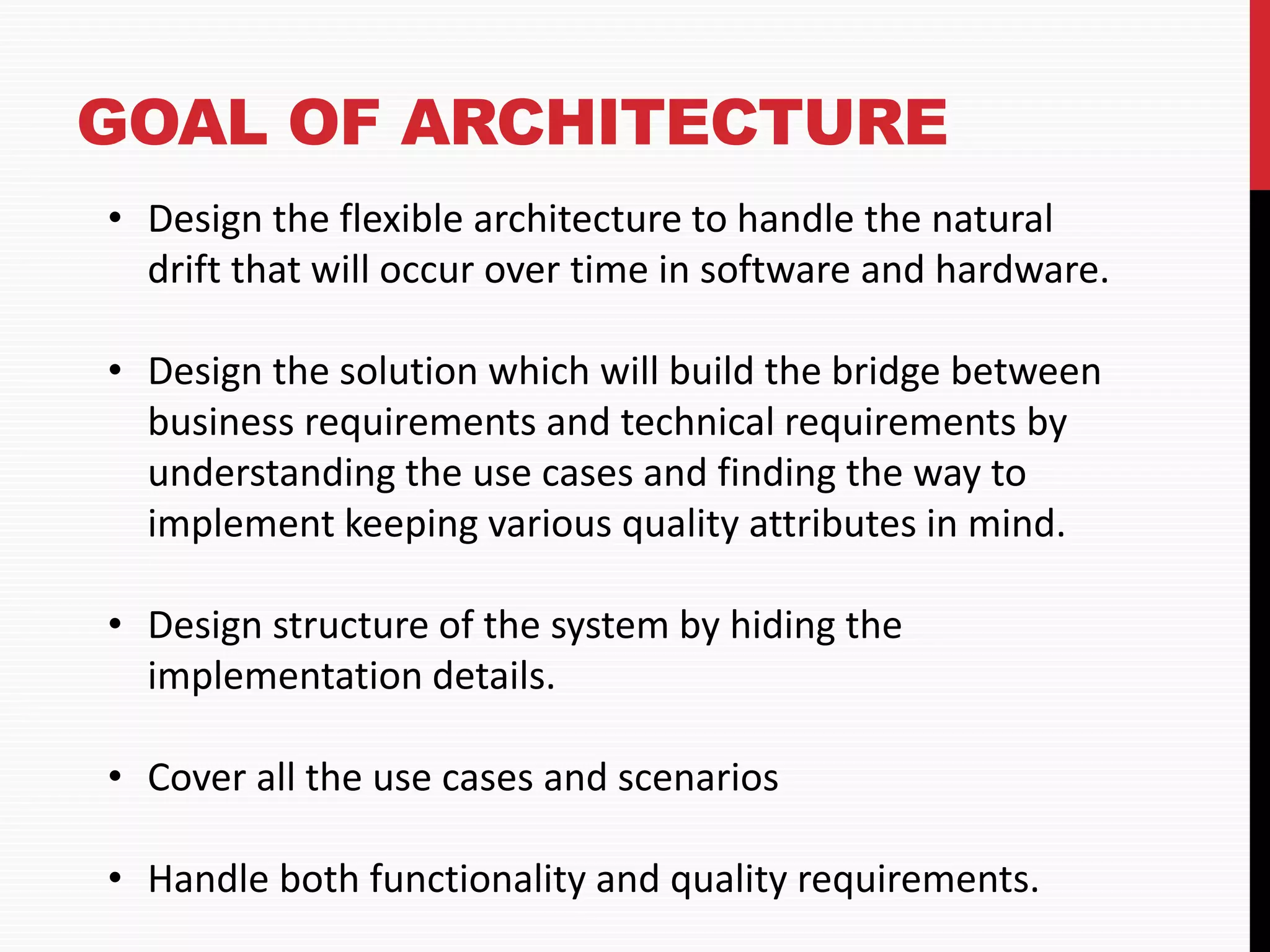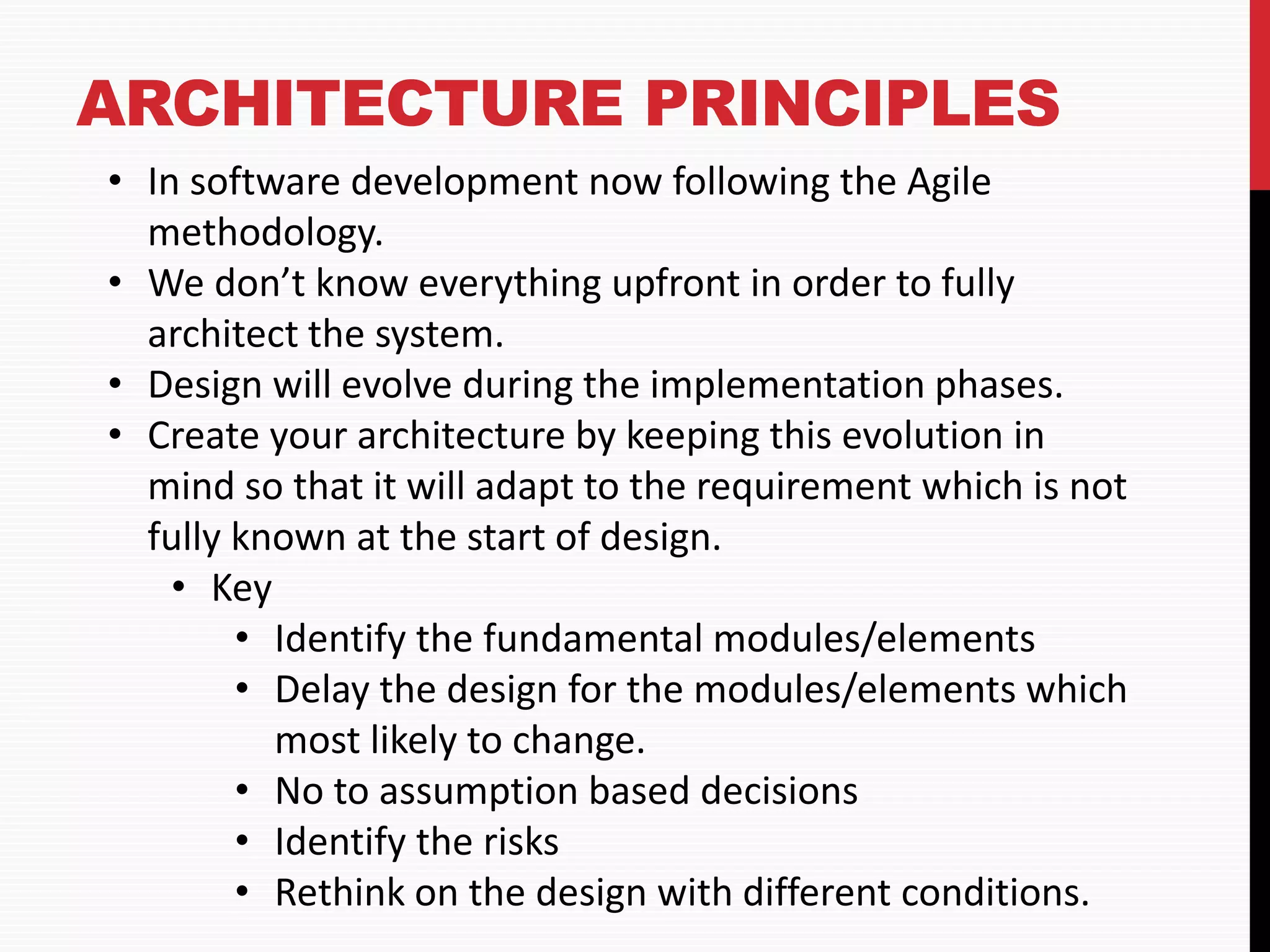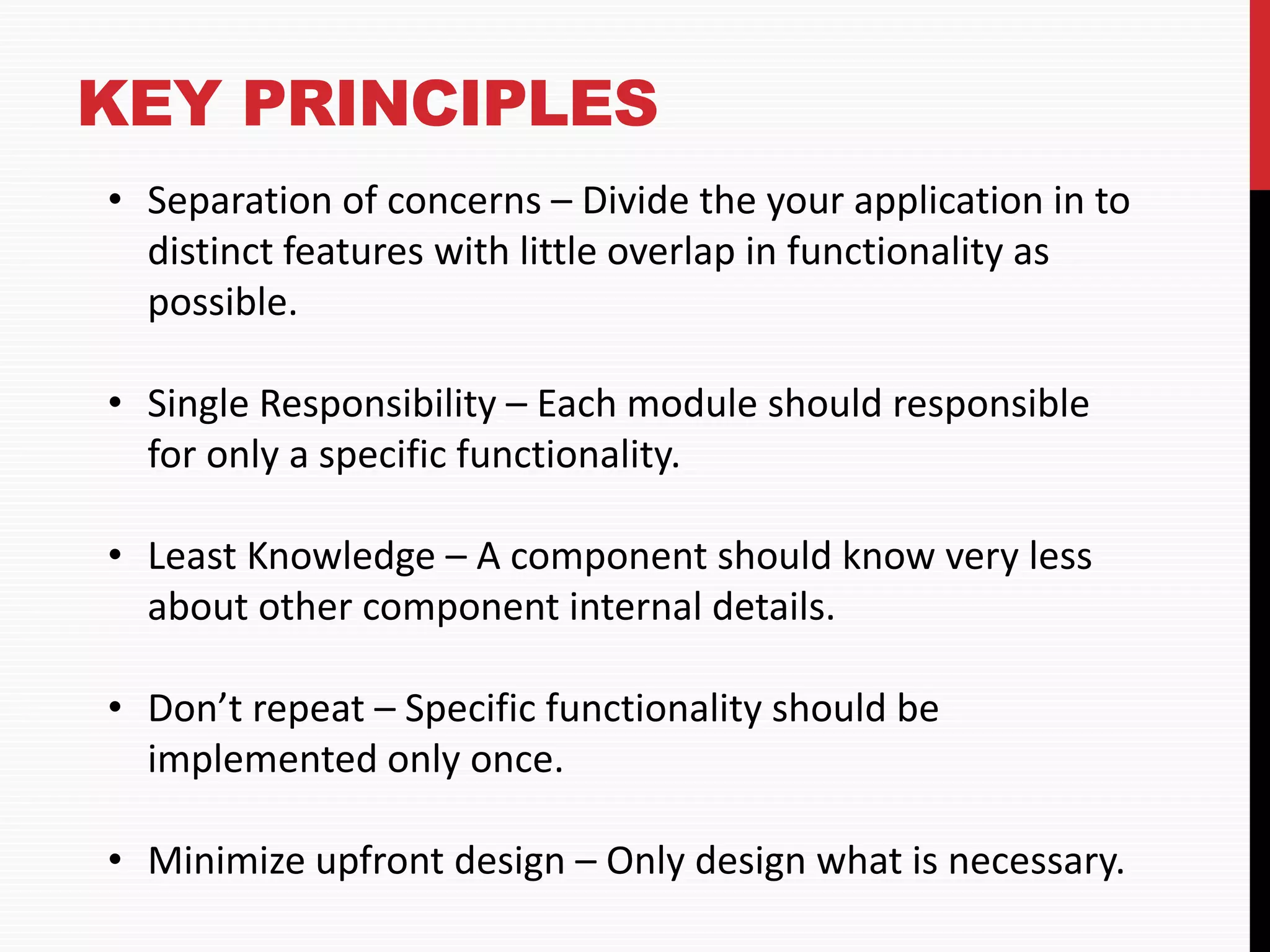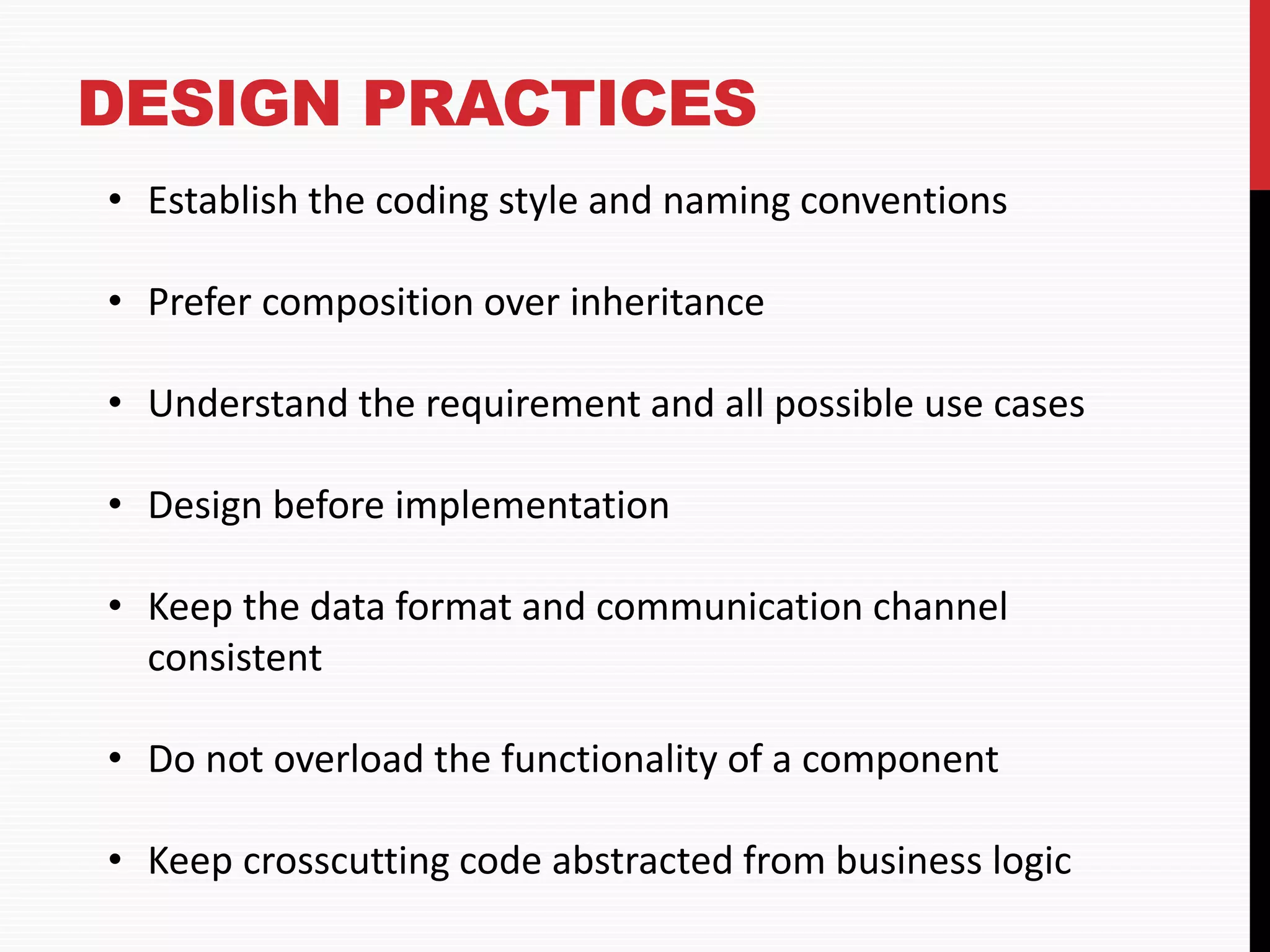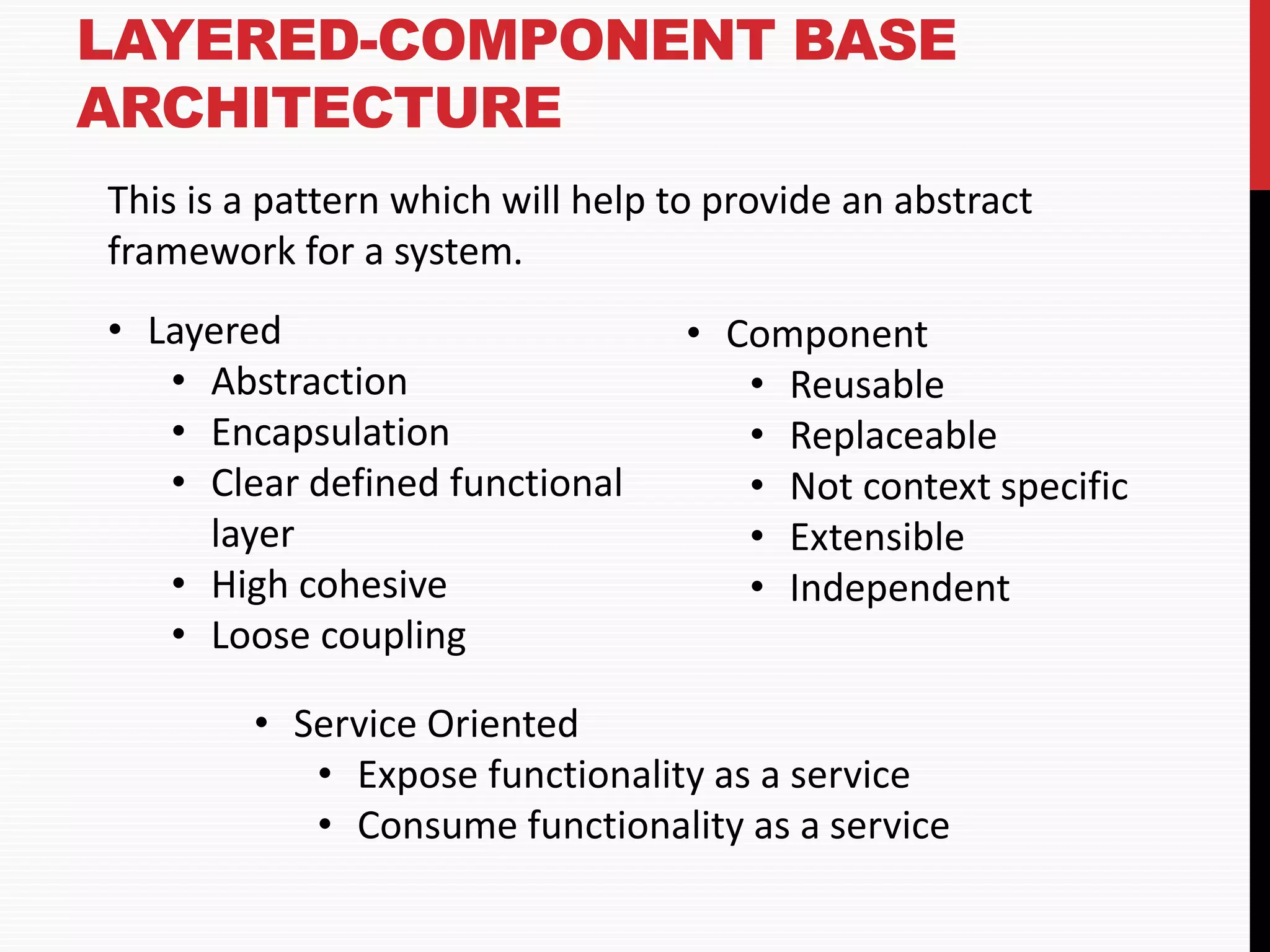Software architecture involves defining a structured solution that meets technical and operational requirements while optimizing quality attributes like performance and security. It is essential for creating stable software and satisfies both business and technical needs by considering use cases and potential changes over time. Key principles include separation of concerns, single responsibility, and minimal upfront design, with design practices emphasizing consistent communication and abstracted business logic.




